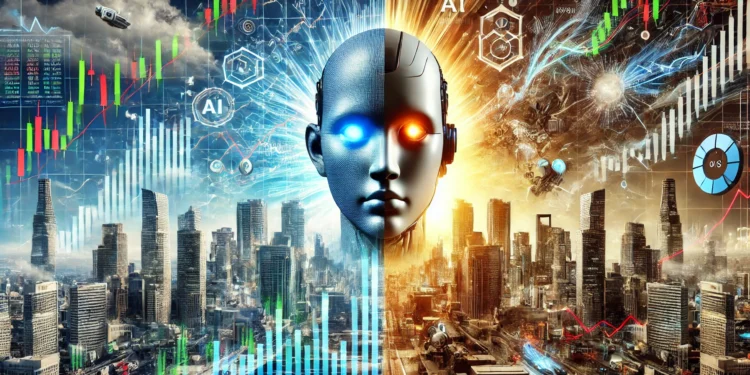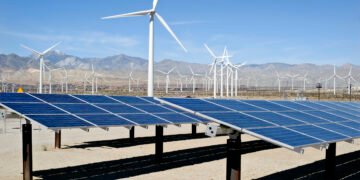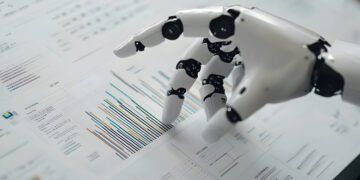Let me tell you something fascinating I’ve been watching unfold in the markets lately. Everyone’s talking about AI changing the world, but nobody’s really connecting the dots on what it means for inflation and commodity prices. After 20 years analyzing economic trends, I’m seeing something I’ve never seen before – a split in how AI affects different parts of the economy.
Here’s what’s actually happening on the ground. Last month, I visited a friend’s tech company where AI chatbots had replaced most of their customer service team. They cut their support costs by 70%. Sounds great for keeping prices down, right? But here’s the kicker – their electricity bill has gone through the roof from running all those AI systems. And they’re not alone.
Let’s talk about services first, because that’s where things get really interesting. Think about what you spend money on – healthcare, insurance, banking, education. In developed economies like ours, these services make up about 70% of what we spend. These industries have always been expensive because they need lots of highly trained people. I mean, doctors spend a decade in training – of course they need to charge high fees to make that worthwhile.
But AI is completely disrupting this model. I recently saw this firsthand at Klarna, the payment company. They deployed an AI system that does the work of 700 full-time customer service reps. Seven hundred! And it handles two-thirds of their customer conversations. The cost savings are mind-blowing.
The healthcare example really hits home for me. A good friend of mine is a doctor, and he’s been using new AI diagnostic tools that are scary accurate. They can spot patterns in medical data that would take human doctors hours or days to find. This isn’t just about saving time – it’s about catching problems earlier and avoiding expensive wrong diagnoses. When you consider that healthcare costs are the number one cause of bankruptcy in many countries, this is huge.
But – and this is a big but – there’s another side to this story that most people are missing. All these AI systems need massive amounts of hardware and power to run. I was talking to some folks at the Electric Power Research Institute recently, and their latest numbers are eye-opening. They’re now estimating that data centers could eat up over 9% of US power consumption. And they keep revising these estimates upward because AI’s energy appetite keeps surprising everyone.
Here’s where it gets really interesting for commodity markets. Remember when everyone thought electric vehicles would drive up copper demand? Well, AI infrastructure needs even more copper for all its wiring and components. I’m watching countries like China stockpile copper at levels we haven’t seen in years. They clearly see what’s coming.
And it’s not just copper. Every robot or AI system needs a whole range of metals and materials to function. Look at what companies like Figure and Tesla are doing with AI-powered robots. If this takes off like many think it will, we’re basically looking at a new industrial revolution in terms of raw material demand.
What does all this mean for prices and inflation? I think we’re heading for a weird split in the economy. On one side, you’ll see service costs dropping faster than we’ve ever seen. Think about it – when AI can do the work of 700 people, prices have to fall. This will hit everything from customer support to legal services to healthcare.
But on the flip side, I’m expecting commodity prices to surge. Natural gas, uranium, industrial metals – anything needed to build and power AI infrastructure. The demand is already outstripping what experts predicted just months ago. And unlike service costs, you can’t AI your way out of needing these physical materials.
I was at an energy conference last week where analysts were scrambling to update their demand forecasts. Nobody expected AI to be such an energy hog. One expert put it perfectly: “We’re digitizing the economy at a pace we’ve never seen, but we forgot that digital doesn’t mean weightless.”
This creates a fascinating dynamic for investors and businesses. Companies that can leverage AI to cut service costs while managing their commodity exposure will have a huge advantage. But those caught on the wrong side of this trend could be in trouble.
What makes this particularly interesting is how different it is from previous technological revolutions. Usually, new technology brings down costs across the board. But AI seems to be creating this unique split – deflation in services, inflation in commodities. It’s like nothing I’ve seen in my career.
The implications for policy makers and investors are huge. How do you manage monetary policy when different sectors of the economy are moving in opposite directions? This is uncharted territory, and I suspect it’s going to lead to some interesting market dynamics in the coming years.
Acknowledgment: This article was written with the help of AI, and inspired by, while including information from, "AI Reduces Energy Service Costs, But Increases Demand For Commodities" published on Forbs.com. For more detailed insights, you can read the full article here.







